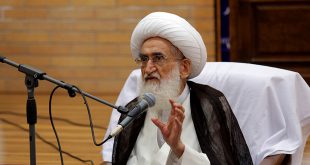In 1978-79, in the course of a massive urban revolution with several million participants, the Iranian people toppled the government of Mohammad Reza Shah Pahlavi (r. 1941-79), who had pursued an authoritarian program of nationalism as well as economic and cultural modernization.
By late 1978, the Islamist faction had come to dominate the antishah protests, in which secular nationalists and leftists also participated. The struggle against the shah was now cast as a reenactment of the historic battle between Hussain (grandson of the prophet Muhammad) and his opponent Yazid in the month of Muharram in 680 C.E. in the desert of Karbalâ (Iraq). Soon, in the name of national unity, the secular, nationalist, and leftist demands of the demonstrators were articulated in religious garb and through rituals commemorating the death of Hussain. The Islamists controlled the revolutionary slogans and demanded that the more secular women protesters don the veil as an expression of solidarity with the more traditional women. In February 1979, the exiled dissident cleric Ayatollah Ruholla Khomeini took power, sponsoring a national referendum that by an overwhelming majority declared Iran an Islamic republic. Shortly, a new constitution gave Khomeini near absolute powers, and a reign of terror ensued.
Political observers and intellectuals around the world greeted the Iranian Revolution and the subsequent establishment of an Islamic republic with contentious reactions. In France, the noted Middle East scholar Maxime Rodinson showed little sympathy for an Islamist government, while the feminist and existentialist philosopher Simone de Beauvoir strongly protested the loss of rights for Iranian women and sent a message of solidarity to Iranian women opposing Khomeini’s initial directives for compulsory veiling in March 1979. In contrast, the poststructuralist philosopher Michel Foucault enthusiastically embraced the Islamist movement, including Khomeini himself, only to become a bit more critical and then lapse into silence on Iran after May 1979. What appears to have appealed to Foucault was the Islamist movement’s reappropriation of the story of the Karbalâ battle almost 1,300 years earlier as a religious-national mythology in confronting the Iranian monarchy. However, Foucault failed to grasp the Islamists’ politically charged reconfiguration and deployment of this myth during the revolution.
Michel Foucault’s critical discourse on modernity and technologies of power can shed much light on several dimensions of the Iranian Revolution, including the opposition against the shah. The Pahlavi dynasty had attempted to inculcate a sentiment of national identity based on reverence for the king and celebration of the pre-Islamic heritage of the Persian Empire. The authoritarian reforms of the Pahlavi era (1925-79) also aimed at creating modern Iranian citizens in appearance and in conduct, relying on many of the strategies that Foucault enumerated in his Discipline and Punish. Foucault’s writings also have a direct relationship to the Iranian Revolution. He traveled to Iran in 1978 and wrote copiously on the revolution, especially the Islamist wing of the movement, whose goal was to ground Iranian cultural identity on an exclusionary religious foundation of Shi’i Islamic beliefs and practices. Foucault’s essays are his most extensive set of writings on any non-Western society, and they form one of the major political engagements of his life. These, and his subsequent writings on “practices of the self” in early Christian communities, provide us with a very useful way of understanding the revolutionary phenomenon in Iran, and the Islamist utilization of Shi’i narratives and ritual practices before, during, and after the revolution.
Foucault’s first visit to Iran was on September 16, 1978, after the Black Friday massacre of September 8, when the army opened fire on several thousand protesters at Jaleh Square in Tehran. He returned to Europe on September 24 and was granted an audience with Khomeini at his residence outside Paris in…
Bibliographic Information
Title: Shi’i Narratives of Karbala and Christian Rites of Penance: Michel Foucault and the Culture of the Iranian Revolution, 1978-1979
Author(s): Janet Afary
Published in: Radical History Review, Duke University Press, Issue 86, Spring 2003
Language: English
 Ijtihad Network Being Wise and Faithful Muslim in the Contemporary World
Ijtihad Network Being Wise and Faithful Muslim in the Contemporary World

